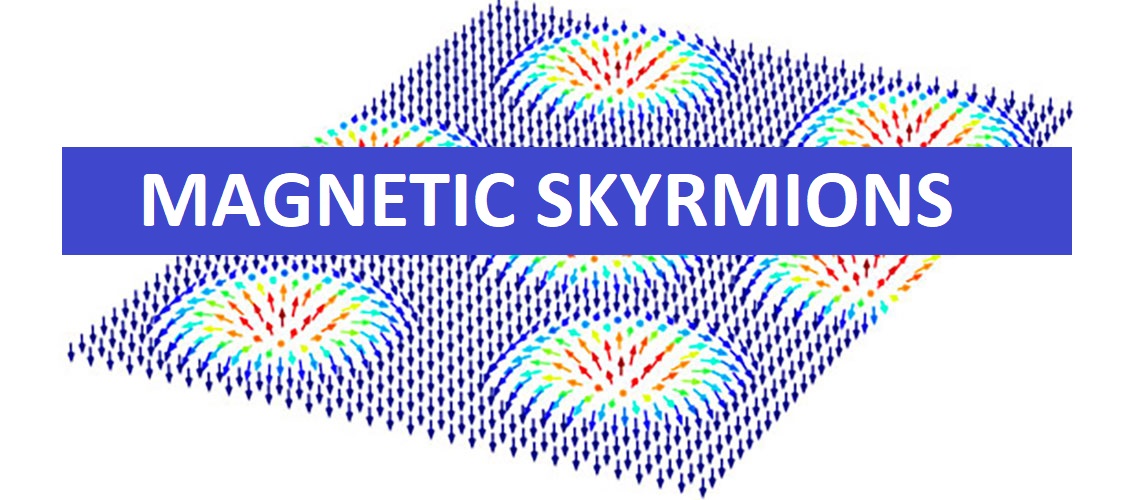
ABOUT MAGNETIC SKYRMIONS
INTRODUCTION
Due to the achievements in science and technology toward miniaturization of devices into the nano-meter length scale within the last decade, the physics of nano-structures, interfaces, and surfaces is nowadays a central area of research. It is characterized by new experimental and theoretical challenges which are imposed due to the fact that the objects of study are in the range or even smaller than characteristic length scales of the system, including the carrier mean free path, spin diffusion length, magnetic exchange length, excitation wavelength, etc. Therefore, in such systems, new properties emerge and also the transition from classical to quantum behavior becomes apparent.
In particular, novel quasi-particles might form, which have exceptional topological properties that are based on the system’s effective dimensionality and its symmetry. Striking examples are relativistically behaving charge carriers originating in an effective Dirac dispersion in the complex electronic band structure and magnetic quasi-particles that arise due to chiral magnetic interactions emanating from spin-orbit coupling.
A feature that makes quasi-particles valuable for applications is their potential stability. Self-localized wave packets, so-called solitons, are examples of quasi-particles with a remarkable stability. They occur in media with non-linear and dispersive constitutive laws. In magnetism, a variety of quasi-particle solitons has been investigated and experimentally observed, such as (i) domain walls (DWs), (ii) vortices, (iii) bubbles, and (iv) skyrmions.
HOW DOES IT WORK & APPLICATIONS
A new type of magnetic quasi-particle that has attracted attention is the skyrmion. Although skyrmions have been predicted a long time ago, experimentally these chiral spin-structures have been only discovered less than ten years ago in bulk, thin films, and monolayers. Since then, a variety of novel (topological) magnetic textures have been observed,

Topological spin textures with different winding numbers. (a) Hedgehog, (b) Néel-type skyrmion, (c) Bloch-type skyrmion, (d) antiskyrmion, (e) skyrmionium, (f) biskyrmion, (g) example of an in-plane skyrmion, (h) skyrmion in helical background, (i) chiral bobber, (j) combed anti-hedgehog formed around the Bloch point in panel
 About what constitutes a skyrmion, there are different definitions used. The term itself was introduced in relation to Skyrme’s original work in nuclear physics where he investigated topologically non-trivial localized field solutions of a non-linear sigma model to describe elementary particles. Since there is no obvious distinction for what should be called a skyrmion in condensed matter physics, within this article, we define a skyrmion as being any spin structure in which the center magnetization is in the opposite direction to its boundary and which can be mapped once to the sphere. In this sense, a radially symmetric skyrmion is characterized by two quantities, its radial profile and the twisting angle.
About what constitutes a skyrmion, there are different definitions used. The term itself was introduced in relation to Skyrme’s original work in nuclear physics where he investigated topologically non-trivial localized field solutions of a non-linear sigma model to describe elementary particles. Since there is no obvious distinction for what should be called a skyrmion in condensed matter physics, within this article, we define a skyrmion as being any spin structure in which the center magnetization is in the opposite direction to its boundary and which can be mapped once to the sphere. In this sense, a radially symmetric skyrmion is characterized by two quantities, its radial profile and the twisting angle.
Topology is a mathematical concept for continuous systems that defines two structures to be equivalent if a continuous mapping from one to the other exists.
In summary, the improved theoretical understanding and the new experimental possibilities have brought the field of skyrmionics to a level where engineering skyrmions with desired properties via material design is feasible and thus skyrmion based applications are enabled.
SKYRMION GROUND STATE AND STABILITY
In systems discretized on the nanoscale, the concept for continuous magnetic textures of topological protection against arbitrarily large fluctuations for continuous magnetic textures translates into topological stabilization with a finite energy barrier. Stability itself is not a universal concept, since the size of the energy barrier depends on the transformation path that is chosen to go from one topologically distinct state to another one. As such, this topic is quite complex.
SKYRMION DYNAMICS
The dynamics of magnetic skyrmions can be quite complex. The following requirements constitute a basis for many types of skyrmion based applications. There must be controllable and efficient ways to create, delete, manipulate, and eventually excite magnetic skyrmions. In addition to skyrmions, a zoo of (topological) magnetic textures has been discovered and theoretically proposed. More complex spin structures, i.e., which break more symmetries, have potentially more complex dynamics and eigenmodes. The subfield of skyrmions with reduced symmetries and in particular antiskyrmions is a branch that needs to be further explored and that shows a high potential to be useful for technical applications. In the following, we address the current state-of-the-art concerning such basic operations, mostly for magnetic skyrmions, and give perspectives on where improvement is needed and what can be expected in the coming years.
To date, numerous methods to create and annihilate skyrmions have been proposed, both regarding creating skyrmions via the boundaries and within the material. In the following, we give an overview of the different methods to create magnetic skyrmions from an experimental point of view by exploiting different stimuli. Regarding skyrmion annihilation, while reviewing the skyrmion stability. Below, we only mention additional aspects regarding the skyrmion destruction.
1. Generation by magnetic fields
Skyrmions are (meta-)stable for different magnetic field regimes depending on the magnetic properties of the system. By appropriately tuning the applied field, the skyrmion lattice phase can become the lowest energy state of the system. This then means that skyrmions spontaneously form, either because other states, such as stripe domains, become unstable or because thermal activation overcomes the energy barrier, leading to the formation of a skyrmion lattice that is lower in energy.
As previously shown experimentally, we can additionally use AC field excitations to switch the magnetic configuration from stripe domains to a lower energy skyrmion lattice.
Finally, localized fields can be used to locally write a skyrmion. This has been demonstrated using magnetic force microscopy tips as localized field sources and a scheme based on the magnetic field from ultrashort electron pulses has been additionally suggested.
2. Generation by thermal excitations
For a system with a skyrmion lattice state being the ground state, it was shown that one can generate skyrmions from stripe domains by current injection or field pulses that leads to heating which in turn generates strong magnetic excitations that allow the system to transform to its ground state configuration. This effect is currently investigated intensively experimentally as one finds a strong temperature dependence of the necessary current densities to nucleate skyrmions, but no complementary theoretical calculations are available so far.
3. Generation by spin torques
Given that spin torques and in particular spin orbit torques efficiently manipulate skyrmions, different mechanisms have been put forward to use spin torques to write skyrmions. Converting DWs into skyrmions is one option and using spin torques in wires with geometrical variations to generate skyrmions is another possibility. Also, by using local spin currents flowing perpendicular to a wire, the magnetization can be locally reversed forming skyrmions.
4. Generation by electric fields
One can influence magnetic systems by electric fields including via resulting strain in order to tune the magnetic properties (DMI, anisotropy, etc.) and thereby enable key operations such as the generation (writing) and annihilation (deleting) of chiral particles. The voltage controlled reversal of the core of a skyrmion was predicted by micromagnetic simulations using electric-field modulation of the anisotropy. The complete operation of a memory device based on skyrmions was analyzed theoretically and a modulation of the DMI with an electric field was found to be extremely efficient for writing and erasing skyrmions. Electric field-driven switching of single skyrmions was shown by spin-polarized STM, where both writing and deleting of skyrmions were demonstrated with electric fields with one polarity creating and the other polarity removing skyrmions.
Fundamentally, the presence or absence of a skyrmion can be efficiently tuned by the electric field modulation of the magnetic properties as this effect is not limited by the time reversal symmetry that prevents easy electric-field switching of the magnetization from up to down. Typically, the formation of skyrmions in external magnetic fields is explained by a balance between Heisenberg exchange interactions, DMI interaction and magneto-crystalline anisotropy, and thus it is clear that a change of any of these parameters on the application of an electric field will modify the energy landscape. It was claimed that the dominating effect of the electric field is on the exchange, where thus one electric field direction favors the ferromagnetic state, and the other stabilizes the skyrmionic state. In contrast, Ma et al. suggest that electric fields could write skyrmions if both the anisotropy profile generated by a thickness gradient and the electric field-induced anisotropy would change. A large voltage induced DMI modulation has also been recently reported, which can modify the states.
Moving skyrmions
The most widely discussed skyrmion-based application is a “racetrack” type device. For such a device, in addition to writing (see above) and reading, the shifting of skyrmions is essential. Given the lateral translation invariance of most systems on the scale of skyrmions, one expects the lowest lying excitation simply to be the translation (shifting) of a skyrmion. In the following, we will consider the displacement of skyrmions which, to the lowest order, do not change their spin texture. Furthermore, we will differentiate between controlled displacements using a directed effective force and random thermal excitations.
1. Magnetic field gradients
The simplest approach to manipulate skyrmion positions is to change the energy of the skyrmion when it moves laterally by a field gradient. This was proposed where it was found that in confined geometries, the resulting dynamics is more complex due to the confining potential of the edges. Moreover, a gradient has been predicted to accelerate the skyrmion. Experimentally, skyrmion dynamics due to field gradients was then realized in where a field pulse initiated the nucleation of a domain whose spatially strongly varying stray field displaced a skyrmion. By measuring the relaxation dynamics, a gyrotropic spiraling trajectory was determined that allowed for the identification of a topologically non-trivial ?=1W=1 skyrmion. More recently, this approach has been proposed to position and trap skyrmions and to guide skyrmions on a track.
2. Electric fields
In addition to creating skyrmions by electric fields, very recently a number of schemes have been proposed for electric field driven skyrmion dynamics. One clear option to achieve this is via e-field induced changes in the anisotropy, as shown in micromagnetic simulations by way of anisotropy gradients from a varying thickness dielectric or stepped magnetic anisotropy generated by multiple surface electrodes. Ma et al. were also able to demonstrate experimentally the electric field driven creation and directional motion of skyrmions in tracks with thickness and resulting anisotropy gradients via the e-field induced changes in the anisotropy. Another suggestion is based on electric-field generated surface acoustic waves for ferromagnetic materials grown on piezoelectrics, with analytical studies of both propagation along tracks and for oscillators. Yuan et al. proposed an alternative scheme based on parametric pumping of the system via alternating out-of-plane electric fields in the presence of a symmetry breaking in-plane magnetic field. Their simulations revealed a resulting so-called “rock-and-roll” motion of the skyrmion with combined excitations of breathing mode excitations and net motion along a set trajectory. The breathing mode excitations result in spin-wave emission which acts to propagate the skyrmion, resulting in the largest velocities being found theoretically for the resonance of the internal mode.177
3. Spin torques
Spin torques induced by an effective acting spin-polarized current in the system affect the magnetic textures and allow one to move them. For magnetic skyrmions, it turns out that the current-induced dynamics is special as in addition to forces collinear with the current; also, forces perpendicular to the current direction can occur, so called Magnus forces which originate from the skyrmion topology. This becomes evident in the quasiparticle Thiele description where a perpendicular force arises from the interplay of the current and the gyrotropic tensor. The transverse motion of skyrmions to the current direction is called the skyrmion Hall effect and recently has been experimentally observed. Overall, the details of the skyrmion dynamics depend to a large extent on the symmetries of the systems and the kind of torque that is acting. Below, we discuss explicitly the two main type of torques, namely, spin transfer torques and spin-orbit torques.
3A. Spin transfer torques
The first observation of current-driven skyrmion motion was found for bulk MnSi at very low current densities. Theoretically, the dynamics of skyrmions due to adiabatic and non-adiabatic spin transfer torques was determined. By choosing a particular geometry of the current flow perpendicular to a confining wire, a velocity enhancement has been predicted. For bulk systems, spin transfer torques are a dominant contribution. There have been a range of theoretical papers that have dealt with spin transfer torque induced skyrmion dynamics. In the case of thin film systems, the ferromagnetic layers are usually very thin (few angstroms) and combined with thicker heavy metal layers so that the current flowing in the ferromagnet is small. This then results in low spin transfer torques, which are usually superseded in experiments by the spin orbit torques.
3B. Spin orbit torques
In materials with spin-orbit torques, first measurements using photoemission electron microscopy (PEEM) have shown that DWs can be moved in opposite directions for Pt/CoFeB/MgO and Ta/CoFeB/MgO stacks and very fast walls have been observed with AlOx top layers due to spin-orbit torques. Results on the sign and strength of the DMI as well as the spin accumulation due to the spin Hall effect (SHE) in tantalum and platinum have been obtained and a range of materials with chiral DWs including Pt/CoFeB/MgO, Ta/CoFeB/MgO, and Pt/Co/Ir, and other multilayer stacks have been reported. Furthermore, recently a fast domain wall motion in compensated ferrimagnets has been experimentally observed. However, as shown for spin transfer torque, the motion of skyrmions along the edge might actually benefit the dynamics, if this motion is sufficiently robust.
4. Magnons
Magnons, the quanta of spin wave excitations, have been shown to displace spin structures, such as DWs, and recently skyrmions have moved to the focus. The interaction between magnons and skyrmions was studied, where it was found that magnons can excite the eigenmodes of skyrmions and that a magnon current can induce skyrmion motion. As the scattering of magnons from skyrmions is not isotropic due to the topology of the skyrmion, there is an associated skyrmion Hall effect due to the incoming magnon propagation direction. The theory of magnon-skyrmion interaction was further developed and it was found that the interaction depends strongly on the magnon wave number and there is a finite momentum associated with the skyrmion. Finally, the impact of skyrmions on magnon properties was also ascertained.
5. Temperature gradients
One particular approach to displace spin textures that involves magnons is the use of temperature gradients. Here, thermal spin currents can transfer angular momentum and additionally entropic effects can also lead to a motion of spin structures as well. Overall, the physics is quite complex and both effects can displace magnetic textures toward the colder as well as the hotter part in certain regimes. This approach has been extensively discussed for DWs theoretically and experimentally there are reports of thermal effects on DWs. This approach was also proposed for skyrmions, the dynamics of a skyrmion due to a temperature gradient was calculated.
6. Thermal fluctuations
Even without any external drives, skyrmions can change their positions randomly due to thermal fluctuations. it was seen that a skyrmion can move by thermal fluctuations from one position to another in the absence of any external driving force. Recently, this was studied in detail. In low pinning materials, strong thermal skyrmion diffusion was identified by measuring the mean square displacement with time. While the diffusion is in qualitative agreement with analytical predictions, it was found that the skyrmion diffusion depends on the skyrmion size and exhibits an exponential scaling with temperature. This surprising behavior can be explained by diffusion in a non-flat potential energy landscape leading to locally different pinning properties. The average energy barriers were extracted quantitatively from the experiments. Analogous to the diffusion in solids, this behavior shows that in the optimized systems, skyrmions exhibit thermally activated dynamics that can be uniquely used to quantify key unknown properties, including energy landscapes, ascertain interaction potentials, etc. Finally, short timescale fluctuations have recently been probed by free electron laser measurements.
Rotating skyrmions
The first work revealing the strong coupling of skyrmions to electric currents actually reported a rotation of the skyrmion lattice by a finite angle due to the applied current. In general, e.g., in classical mechanics, an object experiences a rotation if a net torque is acting on it. In the case of the skyrmion lattice, the rotation in the experiment originates from an existing temperature gradient that leads to greater dissipative and Magnus forces and thus greater torques on one side of the sample than on the other. Due to the gyrotropic nature of the skyrmion dynamics, the rotation is perpendicular to the temperature gradient. Up to now, several experimental and theoretical works on the (dynamical) rotation of the skyrmion lattice appeared studying different forms of symmetry breaking (thermal gradient, magnetic field gradient, electric field, etc.) to induce a rotation.
Skyrmion excitations
The interplay of skyrmions and magnons as well as their excitation spectra is complex. The frequency range of fundamental excitations of magnetic textures is mainly determined by their strongest energy scale which for magnetic skyrmions is in the GHz range. Overall, the eigenmodes of the skyrmions are related to their inertia or mass.
1. Skyrmion lattices
 Shortly after the theoretical prediction of skyrmion lattices, the clockwise, the counterclockwise, and the breathing mode were observed by means of microwave absorption spectra in Cu22OSeO33 and optical pump-probe techniques. Since then, by means of magnetic resonance techniques or inelastic neutron scattering, skyrmion lattice excitations were observed in several compounds including metals, semiconductors, and insulators. It has been shown that these excitations have a universal character and can be quantitatively modeled by only two material specific quantities characterizing the DMI energy and the critical field value for the field polarized phase. In addition to the thus far observed excitations, which symmetry wise couple to homogeneous excitations, there is an ongoing effort to experimentally access new theoretically predicted modes.
Shortly after the theoretical prediction of skyrmion lattices, the clockwise, the counterclockwise, and the breathing mode were observed by means of microwave absorption spectra in Cu22OSeO33 and optical pump-probe techniques. Since then, by means of magnetic resonance techniques or inelastic neutron scattering, skyrmion lattice excitations were observed in several compounds including metals, semiconductors, and insulators. It has been shown that these excitations have a universal character and can be quantitatively modeled by only two material specific quantities characterizing the DMI energy and the critical field value for the field polarized phase. In addition to the thus far observed excitations, which symmetry wise couple to homogeneous excitations, there is an ongoing effort to experimentally access new theoretically predicted modes.
Schematic of a skyrmion racetrack memory storing data by aligning objects like beads on an abacus (courtesy of Marco Armbruster and Jan Masell). Right: Due to the skyrmion Hall effect, the direction of the velocity vs of the skyrmion differs from the direction of the current j by a Hall angle Θ, which pushes it to the edge of the racetrack (upper and lower edge of the panels).
The skyrmion is finally expelled from the racetrack if the confining potential is not strong enough. Here, the simulations are performed for the example of spin-transfer torque driven skyrmion motion.
2. Single skyrmions
Numerical simulations and analytical calculations have identified a number of different internal modes, such as the gyrotropic, uniform breathing, and polygon-like distortion modes. For a thin film, below the magnon gap, there exist a few magnon-skyrmion bound states which are labeled according to their angular momentum quantum number mm. Note that due to the translational invariance, the translational mode has zero frequency. The breathing mode, parametrized by the angular momentum m=0m=0, can, for example, be activated by fields that are directed out-of-plane and which do not affect the radial symmetry of the skyrmions. Imaging of skyrmion breathing modes induced by spin-orbit torques has also been achieved experimentally and the gyrotropic resonance has also been measured. In-plane magnetic fields, on the other hand, do break the radial symmetry and can potentially excite modes that affect the shape of the skyrmion. The quadrupolar mode with m=2m=2 indicates the elliptical instability of the skyrmion and also a sextupolar mode with m=3m=3 is realized only in a small range above the elliptical instability. For more bubble-like skyrmions, also more modes are expected to exist. Experimentally those modes are interesting for microwave generation. So far, the polygon-like distortion modes are still to be observed.
In confined samples, e.g., in ferromagnetic nanodiscs, the translational mode turns into a gyrotropic mode with a non-zero frequency. Furthermore, in asymmetric confining potentials, new modes emerge for increased aspect ratios of the elements.160
APPLICATIONS
Due to the fast experimental progress in observing skyrmions at room temperature and engineering their properties, the use of skyrmions for applications has become an emerging field going beyond theoretical predictions. Here, we discuss both the use of skyrmions in technologies that have been conceptually put forward already and where skyrmions show improved properties over existing approaches and also discuss applications that exploit the unique skyrmion properties, which have inspired the community to come up with completely new application ideas. In general, skyrmions promise low operating powers and data non-volatility leading to a small device footprint.
A. Racetrack
The most prominent application of skyrmions is the racetrack device where demonstrators are already experimentally realized and many of the key operations such as reading, writing, and shifting have been shown. Racetrack memories are based on the idea of storing data by aligning objects like beads on an abacus, exploiting the quasi-particle nature of magnetic spin states. While originally suggested for DWs using spin transfer torque, spin-orbit torques have proven to be a major advance and using synthetic antiferromagnets, even higher velocities were reported. While fundamentally a racetrack memory can be realized using DWs, these also have certain disadvantages. Since they cover the full width of a wire touching both wire edges, their displacement can be prone to pinning at edge defects such as edge roughness. Replacing DWs by skyrmions and storing data by the presence or absence of skyrmions can potentially overcome the problem of edge roughness related pinning. Additionally, compared to DWs, skyrmions can move also in the transverse direction within a wire, which means that they can potentially move around defects or other obstacles as previously investigated theoretically. Furthermore, compared to non-chiral DWs, their chiral nature results in a certain topological stabilization.
Skyrmion applications beyond the racetrack
Due to their small size, topological stability, and low critical depinning current density, magnetic skyrmions and their related entities have also been suggested for various other applications. For example, it has been proposed, primarily based on micromagnetic simulations, to build skyrmion based conventional logic devices which are compatible with racetrack memories. The logic functions exploit the interplay of magnetic interactions and current induced spin-torques. They are implemented via patterned nanowire structures of different widths where the conversion between skyrmions and DW pairs is used. In principle, this conversion mechanism allows the controlled nucleation or merger of skyrmions through the design of specific nano-structures, and thus one can perform basic logic operations. Recently, also a novel reconfigurable skyrmion logic implementing the complete logic functions based on voltage control has been demonstrated by means of micromagnetic simulations.
FUTURE OUTLOOK: SKYRMIONS AND BEYOND
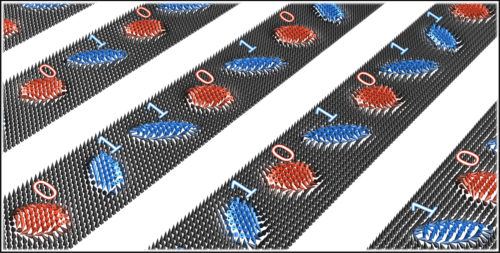 The field of magnetic skyrmions is very active and in a very short time, the field has made enormous progress. Still, several fundamental questions and particular challenges remain, but there is promise that they will be resolved in the future. These include the interaction of skyrmions with other magnetic textures, the particle-wave duality of skyrmions, in particular regarding skyrmion lattice phase transitions, and the suggestion to use skyrmion lattices as magnonic crystals. The interaction and coupling of magnetic skyrmions with light and other topological excitations such as superconducting vortices or Majorana fermions are directions in which we expect to find new exotic states of matter. While it is clear that in this concise perspective article, not all work can be covered, the selected topics show that magnetic skyrmions have become an exciting and very active field of research.
The field of magnetic skyrmions is very active and in a very short time, the field has made enormous progress. Still, several fundamental questions and particular challenges remain, but there is promise that they will be resolved in the future. These include the interaction of skyrmions with other magnetic textures, the particle-wave duality of skyrmions, in particular regarding skyrmion lattice phase transitions, and the suggestion to use skyrmion lattices as magnonic crystals. The interaction and coupling of magnetic skyrmions with light and other topological excitations such as superconducting vortices or Majorana fermions are directions in which we expect to find new exotic states of matter. While it is clear that in this concise perspective article, not all work can be covered, the selected topics show that magnetic skyrmions have become an exciting and very active field of research.





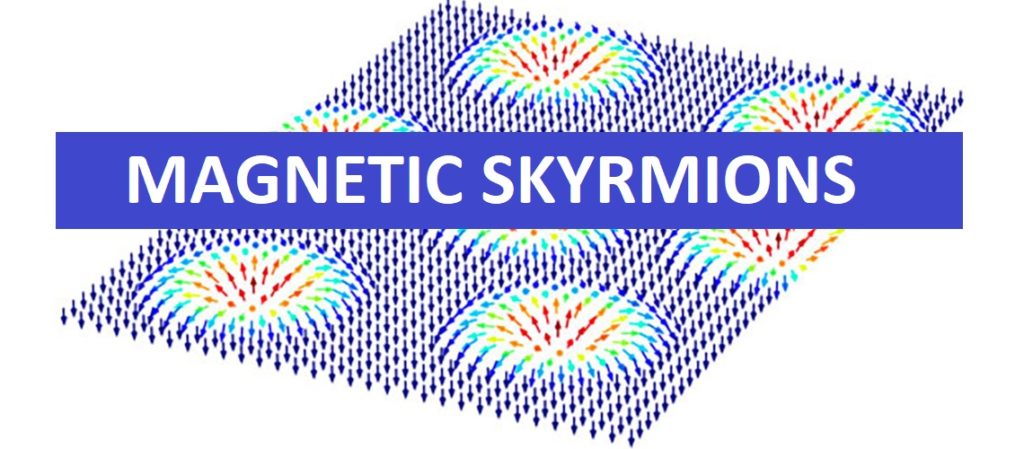

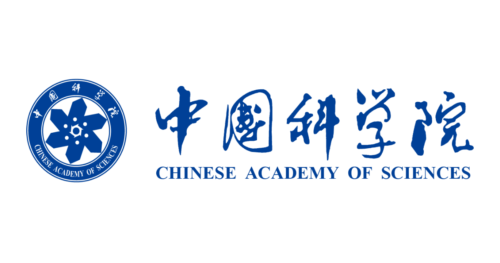

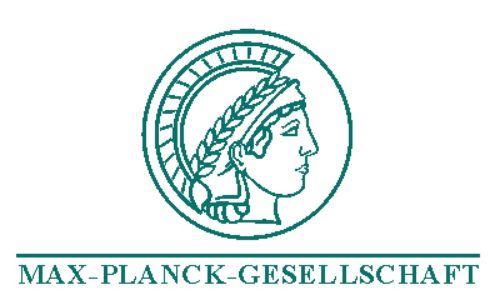




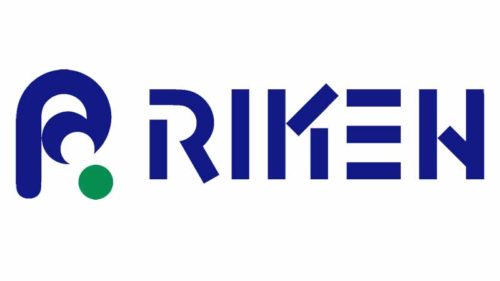
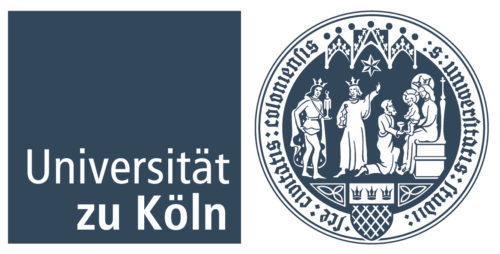

Leave a Reply